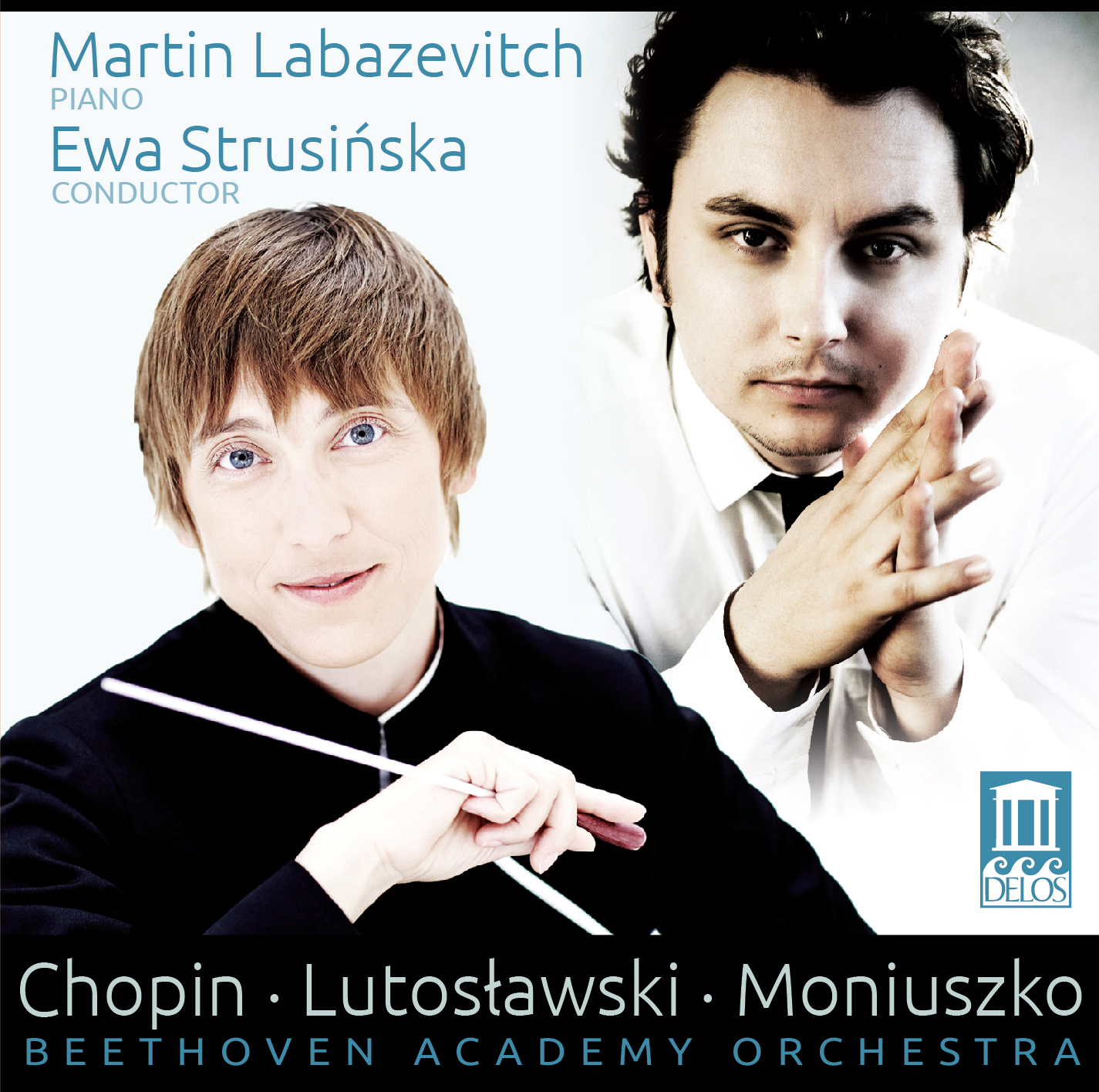Fanfare Magazine
CHOPIN Piano Concerto No. 2 . Fantasia on Polish Themes . MONIUSZKO The Raftsman Overture . LUTOSLAWSKI Little Suite . Martin Labazevvitch (pn); Ewa Strusińska, cond; Beethoven Academy Orchestra . DELOS 3463 (67:09)
2016
Huntley Dent
Although a heart-warming reading of the Chopin Second Piano Concerto may be the drawing card, this buoyant album offers much more. The pianist and conductor have both received awards for advancing Polish musical culture, although they also followed a peripatetic path that has now become familiar. After initial studies in Poland, Labazevitch emigrated to the U.S. to train at the Manhattan School and is now getting his Ph.D. at the Catholic University in Washington D.C. Conductor Strusińska took advanced training in Manchester and from 2008 to 2010 was assistant conductor to Mark Elder with the Hallé Orchestra, making her the first woman to achieve such a post with a British orchestra. I’m listing their bona fides first because the realist in me knows how easily a reader can skip over a headnote filled with unfamiliar Polish names.
If you resist such a reflexive response, there’s a lovely display of talent on this CD. To begin with the Chopin Concerto No. 2 (completed the year he turned twenty and misleadingly numbered second because it was published after the concerto that became No. 1 in the catalog), the present reading is relaxed, ebullient, and thoroughly enjoyable. To their credit, Labazevitch and Strusińska ignore the canard about Chopin’s two concertos containing brilliant keyboard writing but clumsy orchestration. Here the two blend seamlessly, where the usual practice is for the pianist to put on a dazzling show while the conductor knits socks on the podium. Chopin was even younger, around 18, when he took a trio of Polish folksongs and dances to weave into a Fantasia on Polish Themes.
As a formula, the fantasia was enormously popular in the Romantic period, driven to the extreme edge of brilliance and banality by Liszt. By contrast, Chopin’s piano writing is impressive without losing sight of the three melodies, whose emotional tone, especially the central dumka, is inward and melancholy. There’s some obvious immaturity compared with the two concertos, but in making a quieter effect, the Fantasia feels touchingly personal.
The composer Stanislaw Moniuszko (1819–72) was unknown to me, but the overture he wrote for his opera The Raftsman, is a tuneful easy listen. In days regrettably past when concertgoers immediately recognized overtures like Donna Diana, Zampa, and The Merry Wives of Windsor, Moniuszko’s addition to the genre stood a good chance of appealing to audiences. It owes quite a bit, I think, to Mendelssohn’s Fair Melusine as its bright melody skips downstream, the only flaw being that the theme needs a little more development and contrast.
Lutoslawski’s 10-minute Little Suite consists of Polish folk material that has been “correctly” harmonized. The result comes close to being like Kodaly’s Dances of Galánta without quite as much vitality and development. The four movements—simply titled “A Pipe,” “Hurray Polka,” “A Song,” and “A Dance” —aren’t recognizable as mature Lutoslawski. Written in 1950 when the composer was in his late thirties, this example of “socialist realism” was meant to fit the bill set by the Soviet music officialdom. It’s surprising how the circumstances didn’t inhibit Lutoslawski from writing such an attractive, even memorable suite.
Throughout the program Strusińska is a sympathetic, naturally musical conductor. The Polish Beethoven Academy Orchestra is a skilled youth orchestra composed, I take it, of promising students and recent graduates. The recorded sound from 2011 is fine; the program notes are brief and helpful. Many CDs exist reminding us of the depth of Polish musical culture, but this one is a reminder of simper joys and the native flavor of Chopin’s inspiration when an international superstar isn’t trying to shoot off Roman candles from the keyboard.

